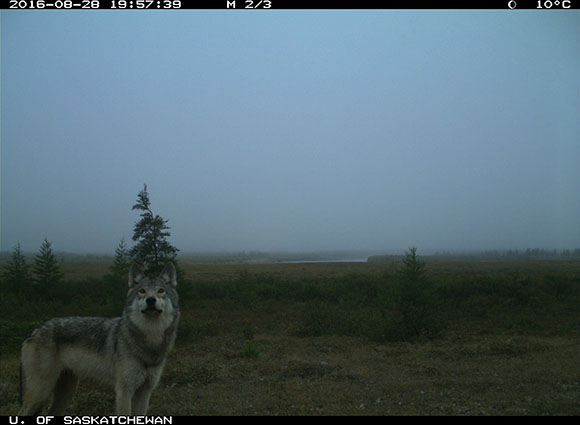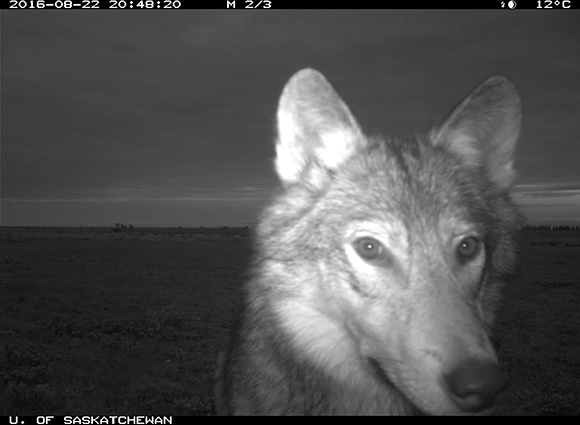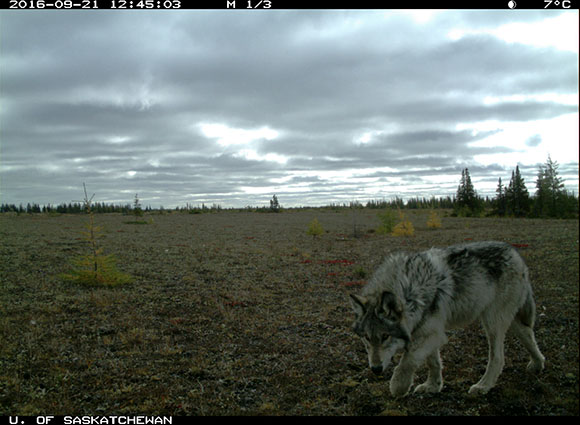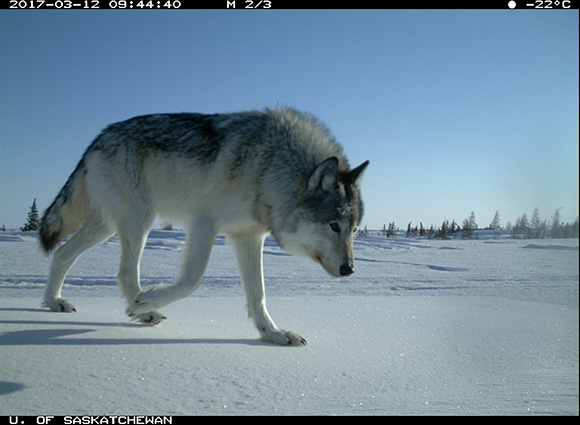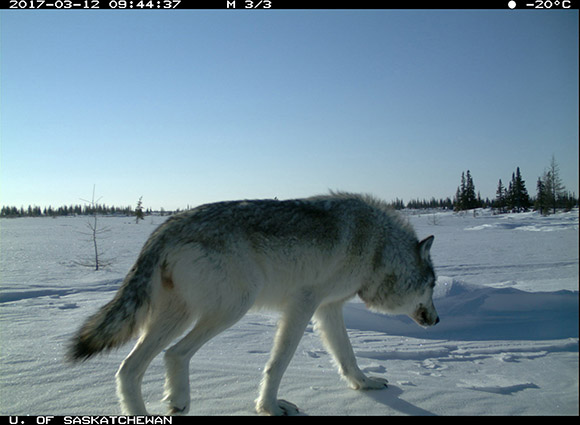Grey wolves
Wapusk National Park
Grey wolves (Canis lupus) are the largest wild canid, or member of the dog family. A male wolf can weigh up to 70 kg, while the females typically are smaller, weighing up to 50 kg. The colouration of grey wolves can vary from greys and blacks, to browns and reds, to almost pure white. Thick fur, with an outer layer of guard hairs, and soft undercoat help wolves to stay warm through the harsh subarctic winter.
Wolves are territorial and live and hunt in packs of up to 12 or more related individuals, but it is not uncommon to find lone wolves or smaller groups. Packs will have a range that spans from 75 to 2,500 km2 depending on food availability. To avoid conflicts with other packs, wolves will howl and scent mark their ranges.
Within a pack, there is typically a dominant breeding pair which suppress the breeding of other individuals by using aggression. The dominant female will have an average litter of 6 pups each spring. Under ideal conditions, these pups will be raised in a den for the first few months, and will be ready to travel with the group at just five months old.
Wolves are a predator for many species, including birds, small mammals, and caribou. Sometimes wolves in the Churchill area are even bold enough to predate polar bear cubs. Working together as a team allows wolves to take down prey 10 times their size. Packs will identify and single out young, old, or weak individuals within caribou herds, which in turn help the herd become more fit. Though a large portion of their diet consists of ungulates such as moose and caribou, they are known to consume berries, birds, eggs, and carrion.
Grey wolves (Canis lupus) are the largest wild canid, or member of the dog family. A male wolf can weigh up to 70 kg, while the females typically are smaller, weighing up to 50 kg. The colouration of grey wolves can vary from greys and blacks, to browns and reds, to almost pure white. Thick fur, with an outer layer of guard hairs, and soft undercoat help wolves to stay warm through the harsh subarctic winter.
Wolves are territorial and live and hunt in packs of up to 12 or more related individuals, but it is not uncommon to find lone wolves or smaller groups. Packs will have a range that spans from 75 to 2,500 km2 depending on food availability. To avoid conflicts with other packs, wolves will howl and scent mark their ranges.
Within a pack, there is typically a dominant breeding pair which suppress the breeding of other individuals by using aggression. The dominant female will have an average litter of 6 pups each spring. Under ideal conditions, these pups will be raised in a den for the first few months, and will be ready to travel with the group at just five months old.
Wolves are a predator for many species, including birds, small mammals, and caribou. Sometimes wolves in the Churchill area are even bold enough to predate polar bear cubs. Working together as a team allows wolves to take down prey 10 times their size. Packs will identify and single out young, old, or weak individuals within caribou herds, which in turn help the herd become more fit. Though a large portion of their diet consists of ungulates such as moose and caribou, they are known to consume berries, birds, eggs, and carrion.
- Date modified :
